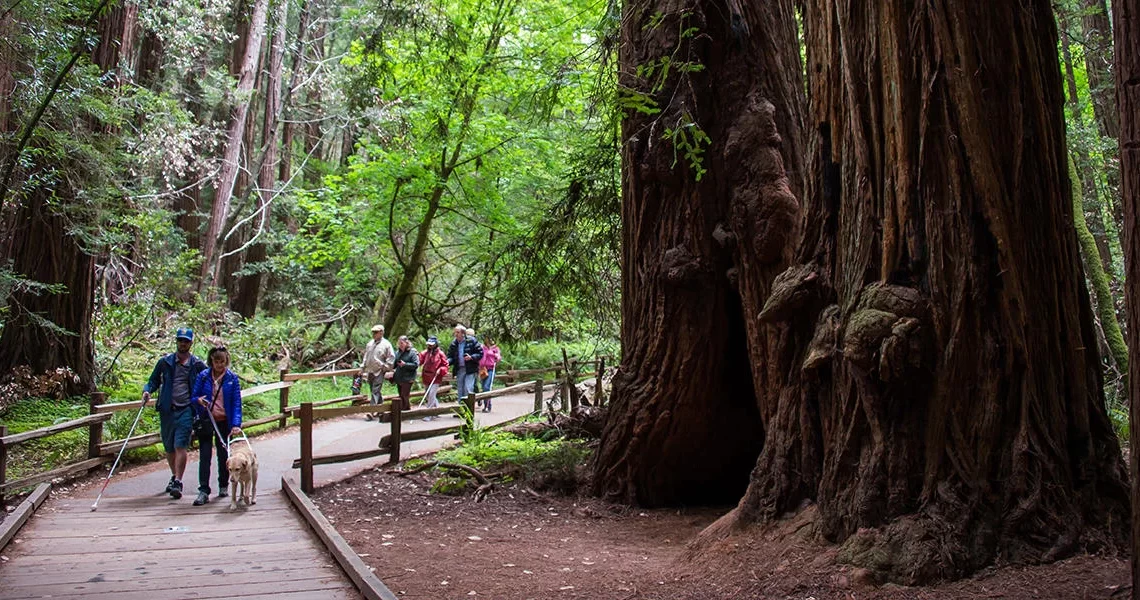Muir Woods National Monument is one of the most popular attractions in the San Francisco Bay Area, drawing over a million visitors per year. As the home of towering old-growth coast redwood trees, some reaching over 250 feet tall and 1,000 years old, Muir Woods is truly a special place worthy of protection and appreciation. However, with such fame comes drawbacks – mainly the crowds and tourist hordes that can detract from the serene, peaceful nature experience that Muir Woods promises. The question remains: is navigating the crowds and tourist hassles worth it to see these majestic giants? The purpose of this article is that, we’ll go through the pros and cons to help you decide if a visit to Muir Woods is right for your next Bay Area trip.
The Setting
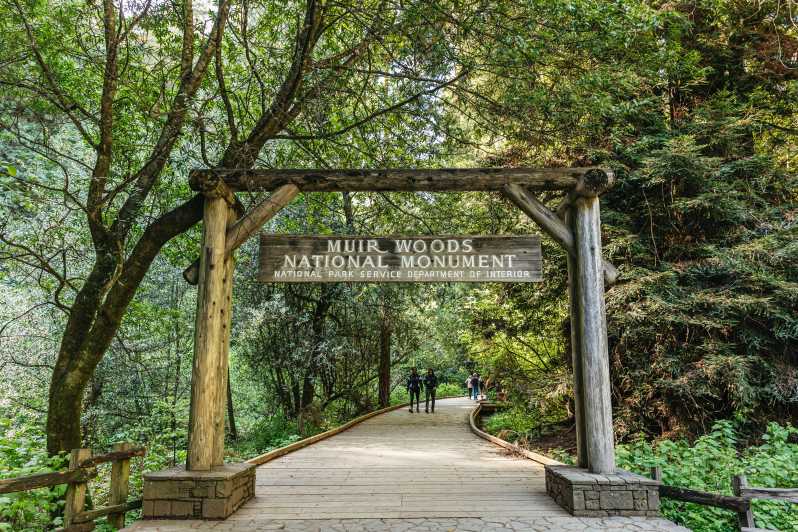
Muir Woods is an idealsitic, almost fairy-tale-like setting of mighty redwoods clustered along the slopes of Mount Tamalpais in Marin County, just 12 miles north of San Francisco across the Golden Gate Bridge. The cool, moist climate and ocean fog drifting inland across the hills provide perfect growing conditions for the coast redwood, allowing a rare redwood forest to exist close to the coastline.
The heart of Muir Woods National Monument is the 240 acres of old-growth forest, with an easy 1-mile Main Trail looping through the groves of trees. Skyscrapers of bark tower straight up, their leafy canopies blotting out the sunlight. Sunrays filter through the mist, spotlighting the huge trunks and lighting up the forest floor covered in ferns, bushes and downed trees.
The Crowds
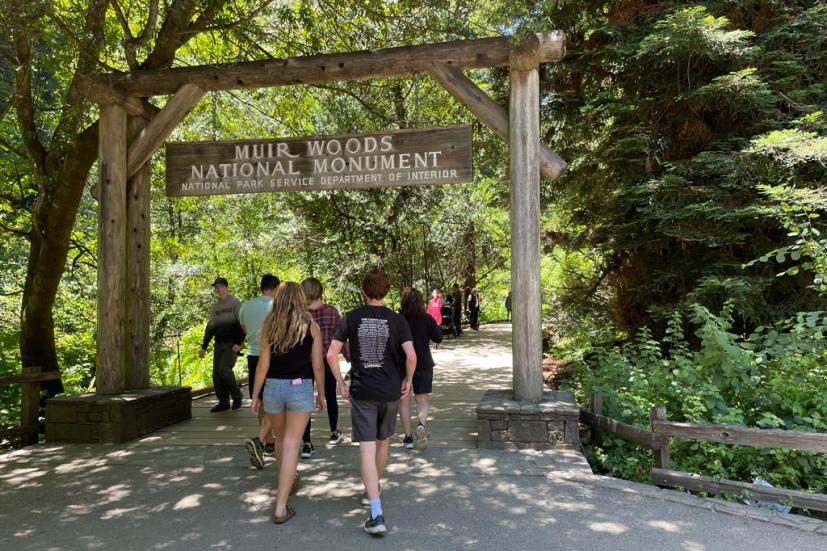
Being so close to San Francisco, Muir Woods draws gigantic crowds – anywhere from 2,000 to 7,000+ visitors per day! This is great for business revenue but can seriously impact the nature experience. An early start is essential to avoid the worst crowds and have the best chance for peace and quiet among the redwoods.
Weekends attract enormous tourist numbers, especially during peak visiting months between May and October. Locals know to avoid weekends and holidays here. Instead, aim to visit midweek when possible. Even then, arrive before 9 am to beat the tour buses and parking lot fills up. By 10 am, the crush of people is intense with the park at full capacity.
Visiting in off-peak seasons like winter brings far fewer people, however weather can be rainy. Spring and fall find a nice balance with smaller crowds, mild weather and occasional wildflowers in bloom.
Access & Transportation
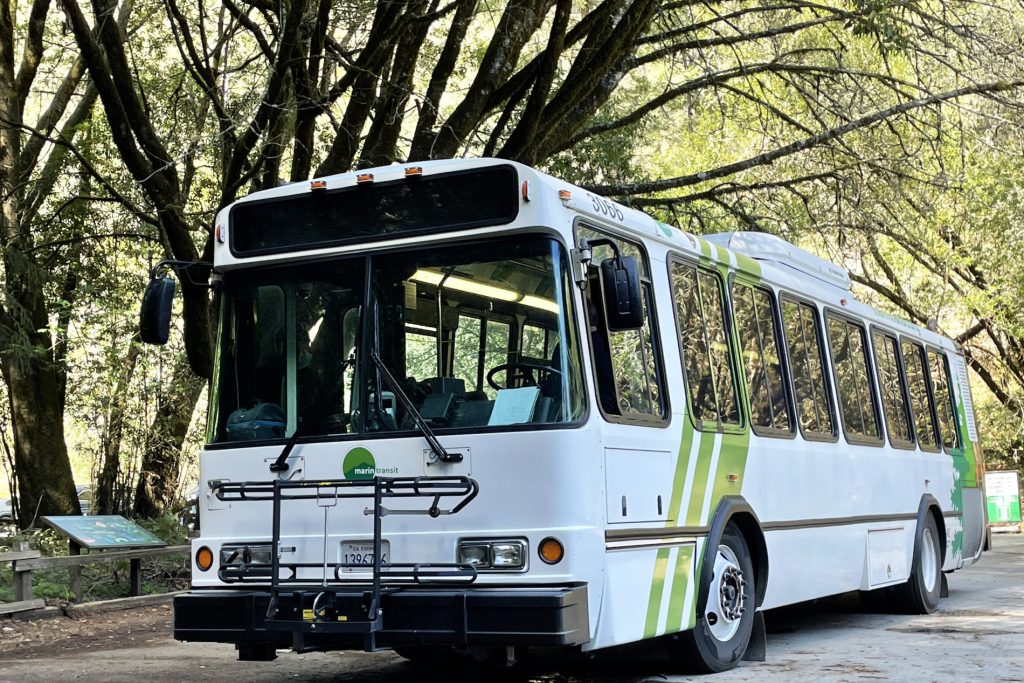
Another significant downside is the access headache and transportation limitations. There is very limited parking available, so driving yourself is extremely difficult unless arriving early. Even when parking lots fill, authorities allow incoming traffic to continue, creating a nightmare scenario of epic traffic jams backing up outside the park entrance as drivers attempt to enter then make U-turns to leave.
Public transportation helps eliminate driving stress. Visitors can take the seasonal Muir Woods Shuttle from Sausalito, with it’s limited schedule and early stops. Better is catching a Marin Airporter bus from San Francisco, running more frequently to the park entrance. For ultimate convenience without a car, both Uber and Lyft serve Muir Woods directly.
What the Redwood Experience Offers
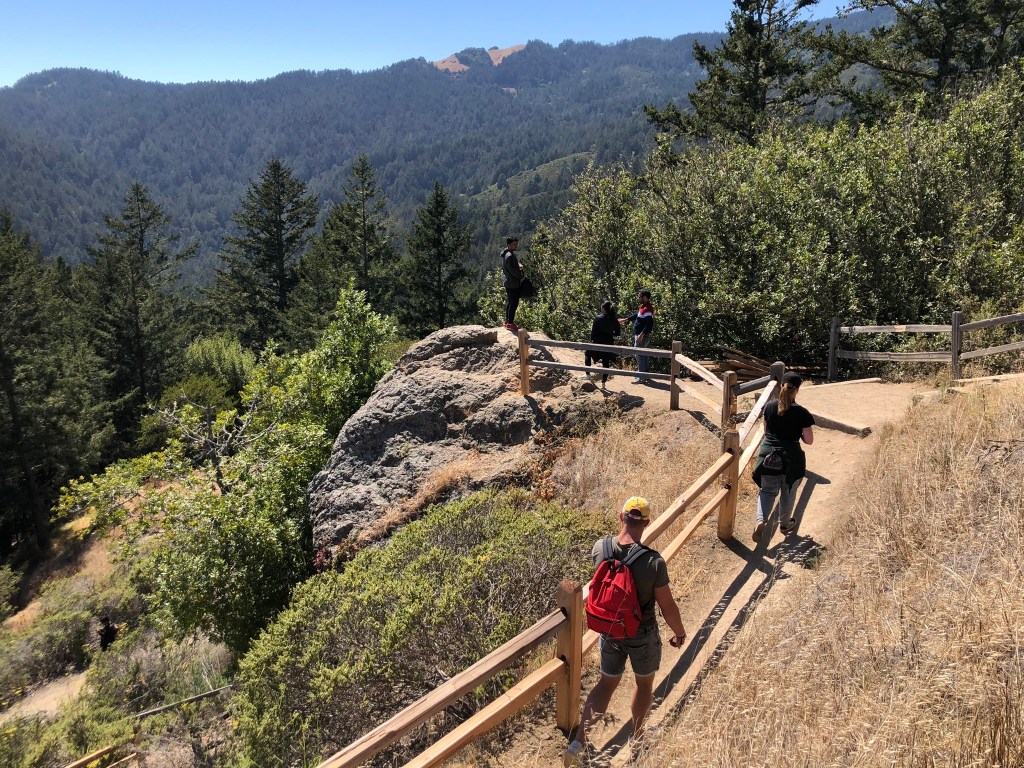
Once navigating the crowds and transportation, the payoff is getting to walk among some of the tallest, oldest trees on Earth. Gazing up at the colossal trunks stretching skyward is profoundly humbling, the fresh forest air rejuvenating. When you find pockets of solitude, there is a primal peacefulness that washes over you.
Several named trees have their own fame, like the gravity-defying Crooked Tree and the majestic Fredrick Tree. The wide Fuchsia Tree looms over part of the Main Trail, showing visible fire scars from survival through the centuries.
The easy Main Trail loop allows you to see many outstanding redwood groves and giant tree specimens in just 1 mile. For visitors short on time or with limited mobility, this makes an ideal introduction to redwood forests. Numerous educational displays explain the ecology, history and conservation around these ancient giants.
Expansion: Extended Trails
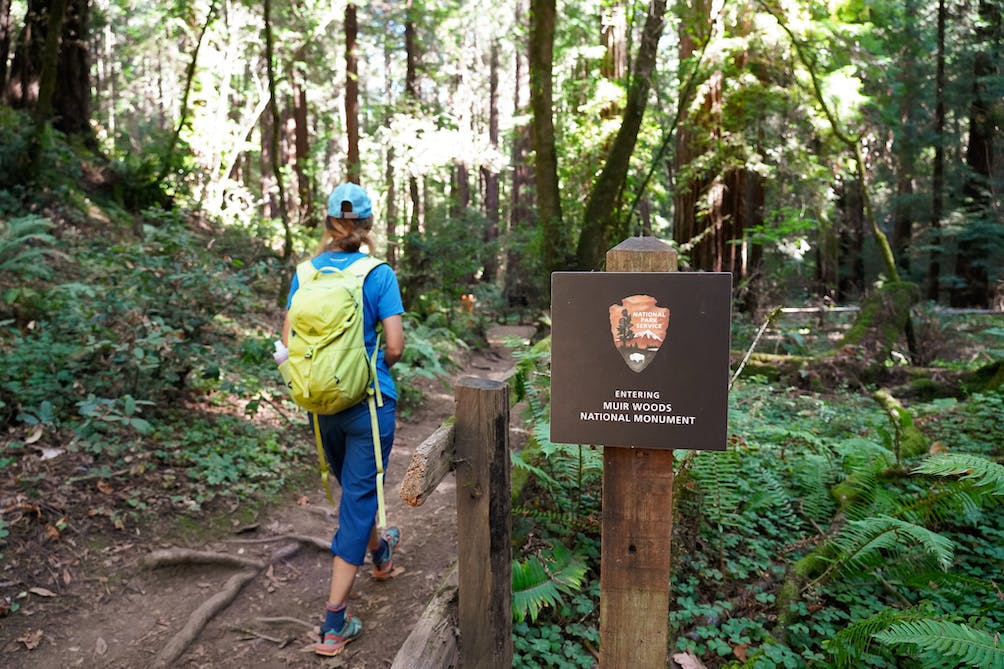
Venturing beyond the Main Trail onto the extended network of unpaved trails leading deeper into the forest offers even more magic, especially for escaping crowds behind. The quiet descends, allowing you to attune your senses to the forest environment. Dappled light filters through the canopy, ferns unfurl along the creeks and interesting mushrooms or banana slugs may cross your path.
2 longer trail options extend outside the main tourist zone, allowing over 6 miles of continuous creek-side trails. The uphill Hillside Trail climbs above the valley, granting aerial vistas over the redwood canopy on the way to the historic Dipsea Trail linking to neighboring Mount Tamalpais State Park. In the opposite direction, the Fern Creek Trail follows it’s namesake downstream along a woodland gorge, crossing back and forth over the creek on quaint little footbridges.
For ambitious hikers able to arrange a shuttle, the ultimate is trekking the 10.5 mile Redwood Creek Trail end-to-end through the heart of the forest. Mostly flat and wheelchair accessible, this phenomenal trail gives you a profound wilderness experience similar to the majestic Redwood National Park further north while still so close to San Francisco. Prepare to share the path only with local wildlife like colorful woodpeckers, bushtits and spotted towhees.
Educational Opportunities
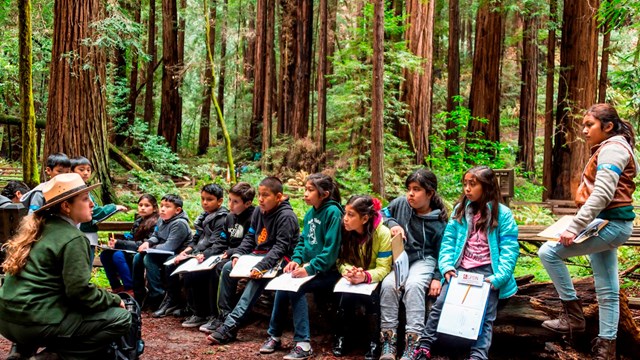
Beyond the trees, Muir Woods offers engaging educational programs for all ages. The excellent Visitor Center introduces visitors to redwood ecology and forest history through displays and dioramas. Out front, trained volunteers called DOCs (Department of Conversation) answer questions while roaming the grounds. For kids, become a Junior Ranger by picking up an activity booklet then exploring the trails to complete. Return your finished book to earn a cool Junior Ranger badge or patch!
Schedule permitting, you can meet at the Visitor Center for rotating Daily Programs like Guided Walks spotlighting redwoods or nature journaling. Check online calendars or ask at the information desk for current program offerings. Weekends and holidays feature more activities.
Looking above the redwood canopy grants a unique perspective on these ancient trees during the wheelchair accessible TreeWatch Tour. Led by docent guides, visitors carry tablet computers synced to display real-time video recorded by cameras 300 feet up in the forest canopy, showing views impossible to see from the ground. Glimpse woodpeckers, hawks and squirrels that call the tall treetops home while circling the giants.
Stewardship
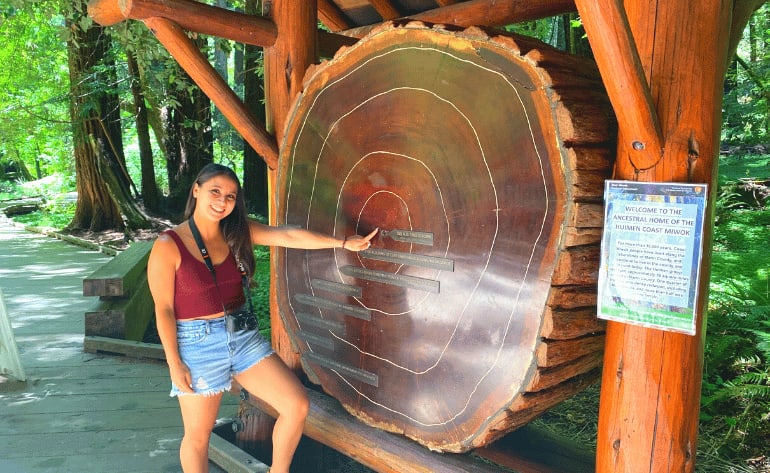
The origins of Muir Woods National Monument stem from early conservation efforts. Shocked at the rapid logging destroying primeval redwood forests in the 19th century, naturalist William Kent purchased a redwood canyon on Mount Tamalpais’s slopes in 1905 and donated it to the federal government to protect the trees. Later in 1908, President Teddy Roosevelt officially declared the site a National Monument, marking one of the country’s first forest conservation acts. Kent fittingly named the preserve after the famous naturalist John Muir who helped promote national park protections.
Over a century later, Muir Woods still champions responsible redwood stewardship. Elevated wooden boardwalks and pathways prevent soil erosion and tree root damage from millions of yearly footfalls. Conscientious visitors are asked to stay on trails, not climb or play on tree roots, be quiet when passing other groups and pack out any trash brought in. Limited annual visitor permits help control crowds and environmental impact going forward.
Ongoing forest and watershed restoration projects remove invasive plants, replant natives and upgrade aging infrastructure – all aimed to balance public access with natural resource protection. Select trees even have been outwardly wired to monitor health. Through public education and immersive visitor experiences, the ethos of conservation and stewardship thrives at Muir Woods National Monument.
Protecting the Redwoods – An Ongoing Challenge
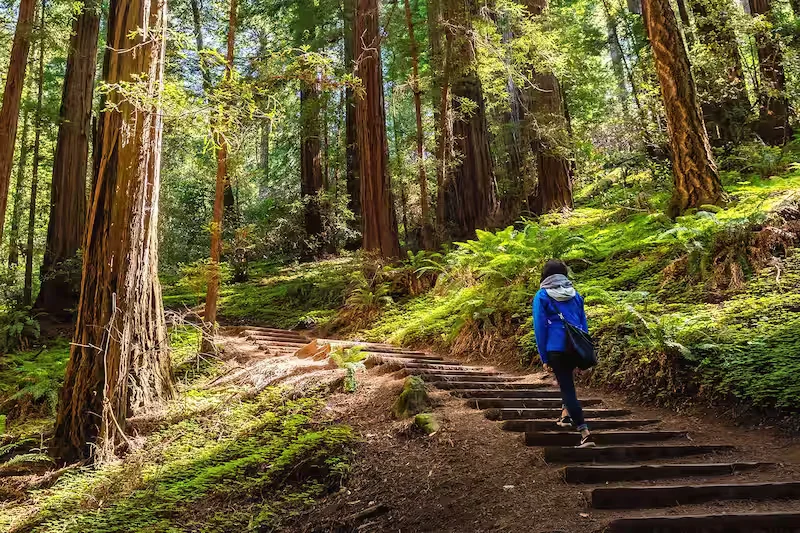
While Muir Woods National Monument protects a small remnant old-growth redwood forest, the long-term outlook for these magnificent coastal giants remains under constant threat. Both climate change impacts and balancing increasing tourism demands with sustainable conservation needs significant attention to ensure future generations can enjoy these iconic trees.
Climate Change Dangers
The temperate climate redwood forests rely on is already warming at an accelerated pace, reducing fog which is critical for delivering moisture during dry months. Drought conditions stress trees, making them more vulnerable to disease, insects and wildfire. As the climate shifts, even hardy redwoods adapted to historic variability struggle to cope. Scientists expect rising seas to claim low-lying redwood groves as shorelines reshape.
Tourism Pressures
Providing public access enables appreciation essential for ongoing conservation support. However, the sharp rise in visitors places enormous strain on the limited park infrastructure. Trails degrade, soil erodes, vegetation gets trampled, trash accumulates while noise and congestion degrade habitat. Permit systems and shuttles began managing crowds, but demand continues increasing. Balancing maximum access with minimum impact remains tricky but vital business.
Habitat Fragmentation
Once covering 2 million acres in California, 97% of old-growth redwood forests were logged historically. Remaining protected lands stand fragmented, limiting wildlife migration and genetic health. Conservation groups now work to acquire private properties across historic ranges, linking isolated giant tree clusters back into functioning habitat. Turning isolated postage stamps of trees into vast interconnected forest ecosystems gives the redwoods their best chance at long-term survival.
Ongoing Protection Efforts
While challenges abound, great progress continues toward understanding and supporting the magnificent coast redwoods. Stewardship, restoration, climate adaptation strategies and global awareness campaigns drive conservation work across agencies and volunteers. Visitors who tread lightly, educate others and financially support groups aiding protection efforts all help ensure these ancient giants endure for future generations to admire.
Final Verdict: Worth Visiting?
Despite the significant crowds and transportation frustrations, Muir Woods remains a profoundly special place that gives urban-weary souls a sylvan respite amid towering ancient giants. The powerful magnificence of the old-growth redwoods literally speaks for itself, their imposing presence evoking a tangible, reverential emotion upon entering the cathedral-like groves. Visitors should absolutely make the effort to experience walking among some of the tallest living things on earth, appreciating both natural splendor and monumental conservation foresight.
Just be sure to visit at off-peak times, prepare transportation accordingly or budget extra frustration time. Follow proper etiquette to minimize your impact while enabling more sustainable public access long-term. Wander beyond the casual tourist herd along extended trails for a genuine wilderness adventure with just the mellifluous birdsong and gurgling creeks alongside soaring giants to keep you company. Then you’ll find the true transformative magic awaiting visitors in Muir Woods.
FAQs
Aim for off-peak days midweek, arriving as early as possible, ideally before 9 am. Avoid busy weekends and holidays when crowds peak. Spring and fall tend to be less crowded than summer.
1-2 hours allows enough time to walk the Main Trail loop and Visitor Center. Add more time for longer hikes or interpretive programs. Arriving earlier buys you more serene time before crowds.
Dress in layers and wear comfortable shoes suitable for natural trails. Weather averages 50-70 degrees F but vary widely, feeling cooler inside forest. Bring a light jacket. Carry water and snacks since none sold in monument.
Driving and parking is extremely limited. Better to take a shuttle bus from Sausalito or San Francisco. If driving, expect to join long lines waiting to enter or leave unless arriving before 8 am.
Yes, the Main Trail loop and extended Redwood Creek Trail are paved for 1/2 mile, wheelchair/stroller accessible with some grades. Avoid unpaved trails beyond.
No, just light snacks and drinks for purchase at Cafe Soria inside the park. No picnicking allowed. Best to eat before/after visiting in nearby Sausalito or Mill Valley.
No pets allowed, only certified service animals. Dogs disrupt wildlife and can spread disease to resident plants/animals. Best enjoy dog-friendly parks elsewhere.

